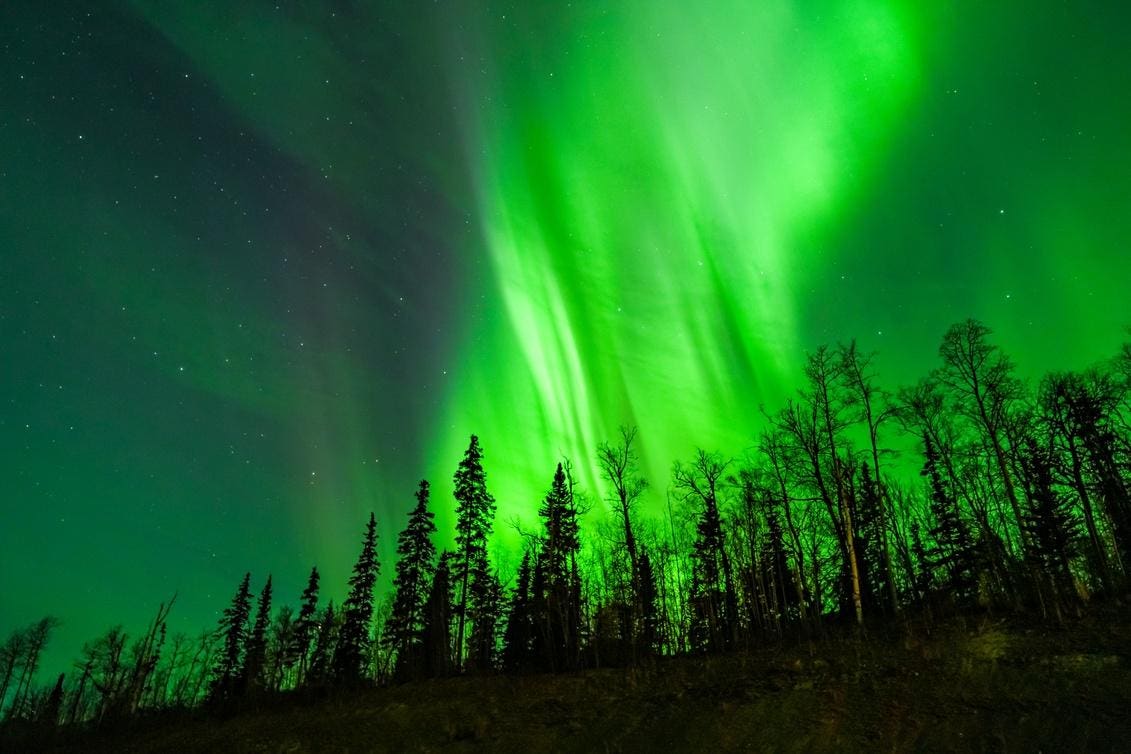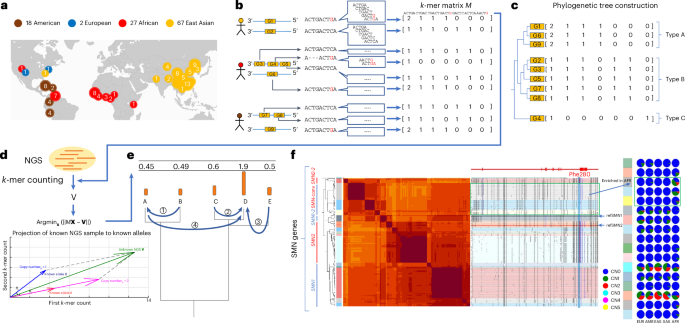Topline
The northern lights have a higher than usual chance of appearing for viewers in some northern states, according to the National Oceanic and Atmospheric Administration, as the Earth could see geomagnetic storms caused by coronal mass ejections from the Sun.
The Earth could also see mild to moderate geomagnetic storms Thursday night, NOAA said.
Anadolu via Getty Images
Key Facts
Forecasters at NOAA predicted a Kp index of five out of nine for Thursday night, which means the northern lights have a chance to appear “brighter” than usual and visible further south.
The Earth could also experience the effects of mild to moderate geomagnetic storms Thursday night into Friday morning, forecasters said, due to coronal mass ejections that escaped from the Sun between Oct. 11-13.
The aurora’s view line for Thursday.
NOAA
Where Will The Northern Lights Be Visible?
The aurora could be visible in many states along the U.S.-Canadian border, including parts of Washington, Idaho, Montana andNorth Dakota, while northern Wyoming could also catch the aurora borealis. In the Midwest, the aurora could also be visible above the skies of Minnesota, Wisconsin, northern Iowa, most of Michigan and most of South Dakota. They also have a chance to appear above border states in the Northeast, including northern upstate New York, Vermont, New Hampshire and Maine. Most of Alaska is also well within NOAA’s view line for the aurora Thursday night.
What Are Coronal Mass Ejections?
Coronal mass ejections are bursts of plasma that escape from the Sun’s corona—its outermost atmosphere. This material can cause geomagnetic storms when it interacts with the Earth’s magnetic field. NOAA is predicting a possibility for mild to moderate geomagnetic storms due to the ejections that escaped from the Sun days ago, rated a G1 or a G2 out of five on its scale. These storms can impact power systems, high frequency radio transmissions, and satellites, though recent storms have not led to significant impacts. They can also cause the northern lights to appear visible further south.
Will The Earth See Radio Blackouts?
NOAA is also predicting a 60% chance of minor to moderate radio blackouts over the next three days, with a slight chance of a “strong” radio blackout due to solar flares. Solar flares can disrupt high frequency radio contact on the Earth’s sunlit side, and a strong blackout (an R3 on NOAA’s scale out of five) can cause loss of radio contact for about an hour.
What’s The Best Way To View The Northern Lights?
Experts at NOAA recommend prospective viewers travel north, toward the Earth’s magnetic north pole, located in Canada. Viewers should find a vantage point with a clear view toward the northern sky, and set out to view the lights at the time they’re most active—typically between the hours of 10 p.m. and 2 a.m.
First Appeared on
Source link












